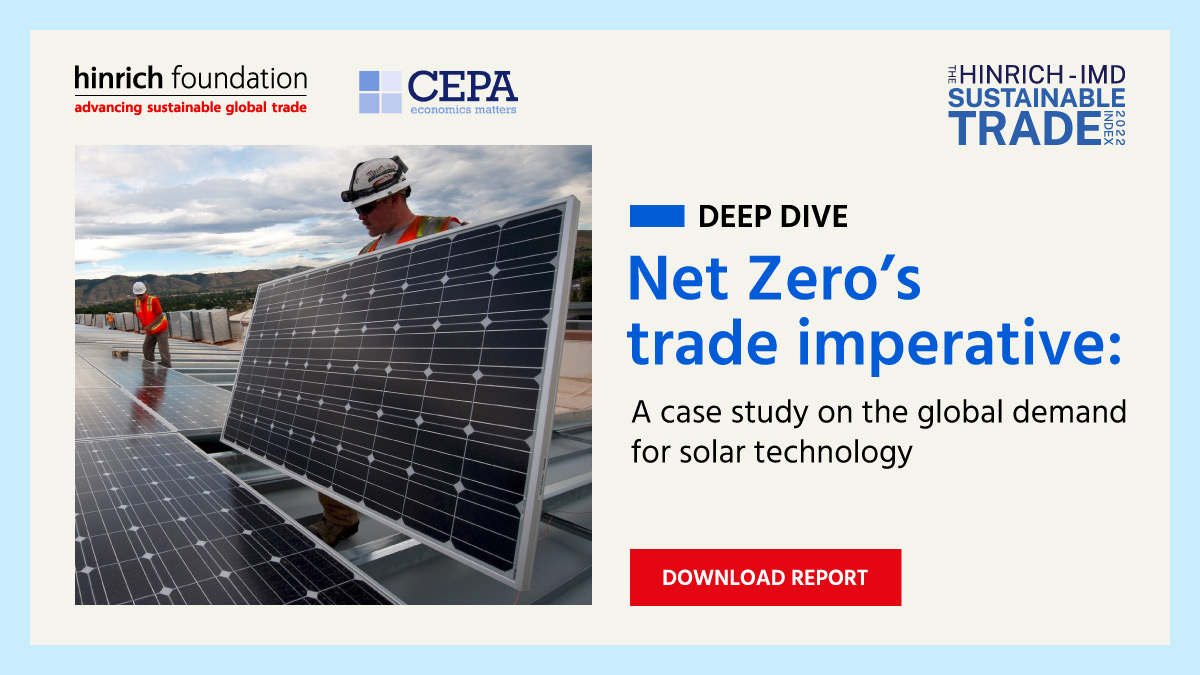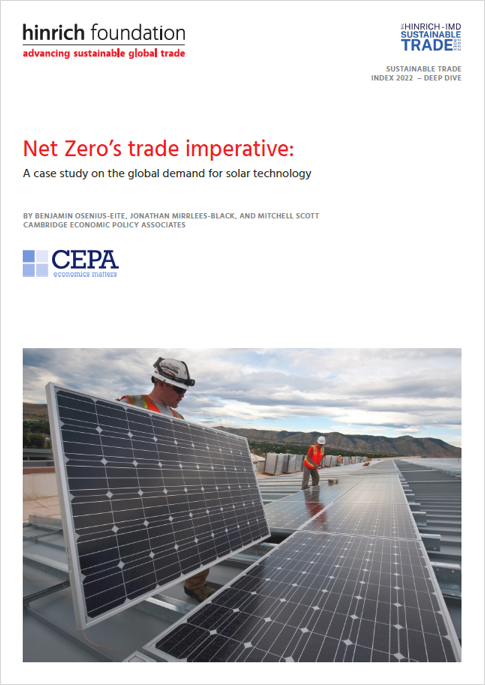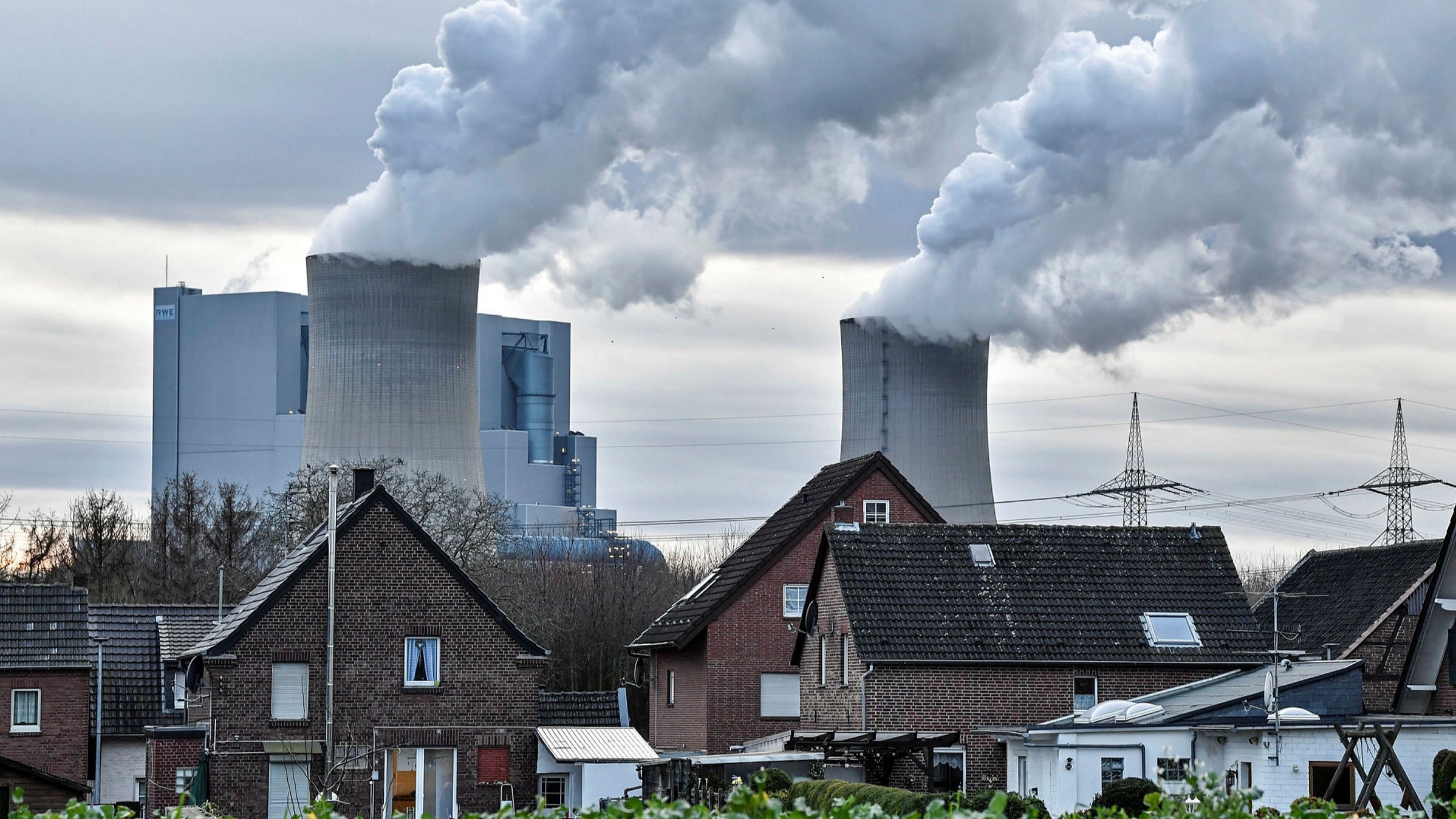Sustainable trade
Net Zero’s trade imperative: A case study on the global demand for solar technology
Published 14 March 2023
The last ten years have seen all parts of the solar supply chain become dominated by China. As trade growth in solar technologies come to be indispensable to the global drive toward Net Zero climate goals, diversification of production to other economies will be crucial for sustaining the world's green transition, with important implications for trading relationships.
To reach the International Energy Agency's (IEA's) target of Net Zero by 2050, the rate of installation of solar generation facilities will need to increase from the 2021 volume of 150 GW to nearly 900 GW annually by 2030. We commissioned a deep dive from Cambridge Economic Policy Associates (CEPA) on the Hinrich-IMD Sustainable Trade Index (STI) 2022, using the IEA's top-down projections and World Bank data to assay the solar capacity of 30 economies featured in our index.
As the results show, most economies would require an exponential growth in their solar capacity. So far, only a handful of economies are currently active in every segment of the solar industry, with China now commanding 83% of the world's supply of polysilicon, essential to the manufacturing of solar panels. Shifting of production to other economies with lower energy intensity, such as Vietnam, Thailand, and Malaysia, could strengthen supply chain resilience and reduce carbon emissions.
In this second deep dive in a series of four into the key findings and themes of our STI 2022, CEPA examines the solar supply chain, evaluates the prospect for diversification, and assesses the potential impact of carbon border adjustment mechanisms on the sector.
This report is part of the Hinrich-IMD Sustainable Trade Index 2022. The Sustainable Trade Index is currently in its fourth edition.
© The Hinrich Foundation. See our website Terms and conditions for our copyright and reprint policy. All statements of fact and the views, conclusions and recommendations expressed in this publication are the sole responsibility of the author(s).







